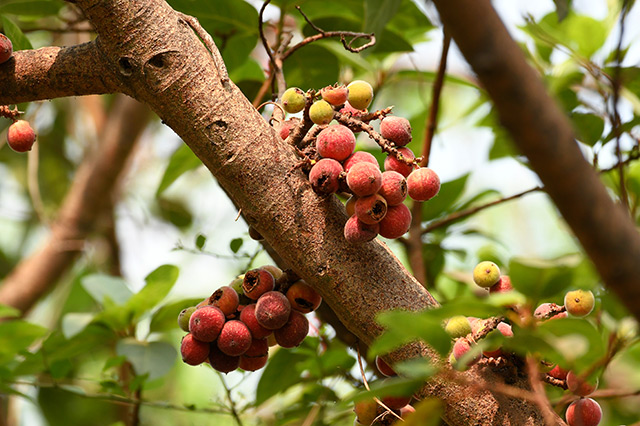
Researchers at the Open University of Sri Lanka and Sri Jayewardenepura University looked at the cluster fig (Ficus racemosa L.), a type of fig tree found in Asia, Africa, America, and Australia. In their study, extracts were chemically derived from the stem barks of the cluster fig. These were then subjected to a scratch wound assay (SWA), a test to measure the ability of a compound to influence cell migration into the wound space. Two cell types were used in the assay: Baby Hamster Kidney (BHK-21), a cell line normally used in many biological processes, and Madin-Darby Canine Kidney (MDCK), cells which are used in studying how epithelial cells behave, in term of protein trafficking and polarity, among others. After the assay, dichloromethane and hexanes extracts that demonstrated cell migration enhancement were subjected to another round of testing to isolate the primary compounds responsible for the cell migration activity of the cells.
To study its antimicrobial properties, the team used a Kirby Bauer disc diffusion assay, where the extract was dissolved in methanol, then placed in nutrient agar discs where bacteria strains – which included Bacillus subtilis, Escherichia coli, Staphylococcus aureus, and Pseudomonas aeruginosa were growing. The same assay was conducted to test the extract's antifungal activity.
Researchers found that cell lines for both dichloromethane and hexanes extracts demonstrated enhanced cell activity. In particular, ethyl acetate and menthol extracts had shown antibacterial activity against Staphylococcus and Bacillus species and antifungal properties against Saccharomyces spp. and Candida albicans.
"Based on the results of bioassay-guided fractionation, it is revealed that lupeol and β-sitosterol are the cell migration enhancing compounds present in dichloromethane extract of the bark of F. racemosa," they explained. In particular, the two displayed cell migration enhancement activity on BHK 21 and MDCK cell lines, with ideal concentrations for each determined to be at 30 micrometers (μm) and 35 μm, respectively. Moreover, lupeol acetate, which isolated from the hexanes extract, was also noted to have pro-drug properties. A pro-drug, in particular, is an inactive agent that becomes a drug once it is metabolized by the body. According to researchers, this may further improve the wound healing process.
Researchers concluded that compounds found in the stem bark of cluster figs demonstrated an increased ability for cell migration, as well as antimicrobial properties. "Our results support the use of F. racemosa L. in the traditional medicine for wound healing," they wrote.
Traditional applications of cluster figs in Ayurveda
One of the areas where cluster fig trees are popular is in India, where they're known as gular trees. In Ayurveda, the trees are used to build up physical strength. In the study, the researchers have indicated that the latex of the plant has been used to treat wounds; however, nearly every part of the tree is known to provide health benefits.
The bark, when used as a decoction made with catechu (an extract from acacia trees) and phitkari (potassium alum), can treat mouth disorders when gargled. If the bark is boiled in water and ingested with cumin, it can help manage symptoms of metrorrhagia, that is, abnormal bleeding from the uterus. The gum can relieve swelling and inflammation, while fig leaves, especially those with dark-colored eruptions, can treat chicken pox and boils. (Related: Fig Leaves Provide a Natural Health Remedy for Diabetes.)
Learn how to use figs and other plants to survive in the wild by following Herbs.news today.
Sources include:
BMCComplementAlternMed.BioMedCentral.com
Please contact us for more information.























